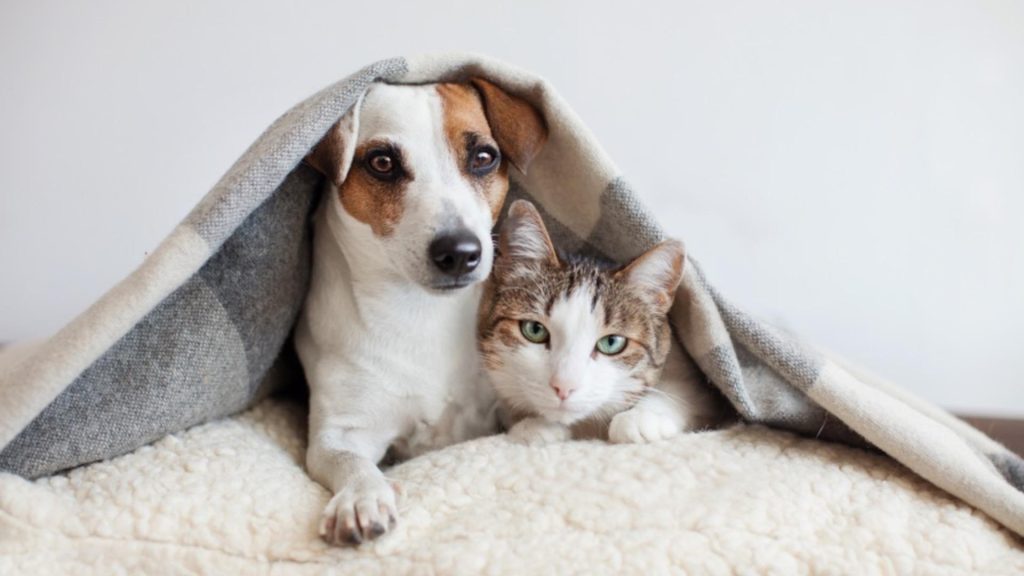How to Create a Safe and Healthy Environment for Pets at Home: Essential Guidelines

Creating a Safe and Healthy Space for Your Pets
Ensuring a safe and healthy environment for your pets at home is essential for their well-being and happiness. Pet owners in Nigeria face unique challenges, including high temperatures, limited living space, and varying access to resources. These factors necessitate thoughtful planning and consideration to create ideal living conditions that promote the overall health and happiness of your furry companions.
The first step in creating a nurturing and safe atmosphere is to focus on the secure living area. This means conducting a thorough inspection of your home to identify potential hazards. For instance, common household items such as electrical cords, sharp tools, and tiny pieces of plastic can pose significant risks to curious pets. Additionally, many plants are toxic to animals; for example, the popular “Spathiphyllum” (peace lily) and “Dieffenbachia” (dumb cane) can cause severe health issues if ingested. Removing these dangers is paramount in establishing a safe haven for your pets.
Another equally vital aspect is comfort and cleanliness. A tidy environment free from clutter contributes not only to a healthy habitat but also to the mental well-being of your pets. Regular cleaning helps prevent infections and allergies that can arise from dust and dirt accumulation. Additionally, investing in quality bedding is essential. In Nigeria, where the climate can be hot and humid, providing a cool, ventilated space for your pets to rest can significantly enhance their comfort. Consider using breathable materials for their beds and ensuring they have access to shaded areas where they can escape the heat.
The third cornerstone of a pet-friendly home is nutrition. Providing a well-balanced diet tailored to your pet’s specific needs is crucial for their health. For dogs and cats in Nigeria, options such as local grains, vegetables, and quality proteins can create a nutritious diet. Additionally, ensure that clean, fresh water is always available. Maintaining a regular feeding schedule fosters a sense of stability, contributing to your pet’s happiness and overall temperament.
These foundational steps can greatly enhance the quality of life for your pets. Throughout the article, we will explore more practical measures and tips designed to safeguard your pets at home while promoting their health and joy. Your commitment to creating a safe environment is a testament to the love and care you have for your furry friends, ensuring that they not only live but thrive in your home.

RECOMMENDED: Check out this similar article
Establishing Security and Safety Precautions
As a responsible pet owner, prioritizing security within your home is paramount. To start, ensure that all windows and doors are securely fitted, preventing any accidental escapes or intrusions. For those who live in high-traffic or busy areas, consider installing screens or using locks that are pet-proof. Additionally, if you have a yard, it’s crucial to maintain a secure fence that doesn’t allow your pet to wander off. Regularly check for any gaps or potential weak spots that could become escape routes.
Moreover, it’s important to assess your living space for potential toxic hazards. Here are some common items found in many households that can endanger your pets:
- Household cleaners: Many cleaning products contain chemicals that can be harmful to pets. Opt for pet-safe alternatives or natural cleaning solutions.
- Human food: Certain foods, such as chocolate, grapes, and onions, are toxic to pets. Always be aware of what food items you leave accessible, especially when hosting guests.
- Small objects: Items like coins, buttons, and small toys can be choking hazards. Keep such objects out of reach from your eager pets.
- Medications: Store all medications safely, as even a single pill can be fatal to your furry friends. Consider using child-proof locks on cabinets to prevent accidental ingestion.
In addition to identifying and removing hazards, consider implementing a pet-proof zone in your home. Select a designated area, equipped with your pet’s necessities such as food, water, toys, and a comfortable bed, where they can feel safe and secure. This dedicated space can help instill a sense of stability in your pets, particularly during times of stress, such as moving to a new home or when there are numerous visitors.
Furthermore, engaging in regular training sessions can help enforce rules related to where your pets can roam safely. By teaching basic commands such as “stay,” “leave it,” and “come,” you can significantly diminish the chances of accidents and instill a sense of obedience and discipline. This is especially crucial for larger breeds known for their strength and exuberance. Regular reinforcement of these commands is important for maintaining a harmonious household.
Building a safe environment goes hand in hand with nurturing your pet’s emotional health. Pets, much like humans, thrive in spaces that feel secure and stable. By following these essential guidelines, you not only protect them from hazards but also ensure a nurturing ambiance that fosters happiness and well-being.
Creating a Safe Haven for Your Pets
When considering how to create a safe and healthy environment for your pets at home, it’s essential to acknowledge that every detail matters. Ensuring that your living space is not only comfortable but also free from hazards is imperative for your furry friends’ well-being. This section delves into the various elements that contribute to a secure home.
Proper Pet-proofing
Begin with a thorough inspection of your home. Look for potential hazards, such as loose electrical cords, sharp objects, or items that are easily swallowed. Pet-proofing involves securing cleaning supplies and medications in cabinets that pets cannot open. Utilizing gated areas can also help restrict their access to unsafe zones of your home, creating a more controlled environment.
Safe Spaces
Every pet should have a designated area they can retreat to for safety and relaxation. This could be a cozy corner with their favorite bed or a crate that serves as a den-like space. Such environments not only offer security but also reduce stress, allowing your pets to feel at ease in their surroundings. Adding familiar scents like their blanket or a piece of your clothing can enhance this sense of safety.
Indoor Plants and Toxicity Awareness
Many pet owners are unaware that certain indoor plants can be toxic to pets. Researching pet-friendly plants is crucial, as species like lilies and sago palms can be harmful. Instead, opt for non-toxic plants such as spider plants or Boston ferns. Familiarizing yourself with these plants ensures that your home remains a safe sanctuary.
Regular Exercise and Mental Stimulation
Creating a healthy environment also involves keeping your pets physically and mentally active. Regular exercise is vital to maintain a healthy weight and prevent boredom—a leading cause of behavioral issues in pets. Incorporating interactive toys, puzzles, and engaging activities can stimulate their minds, making your home a haven for both physical fitness and cognitive development.
Routine Veterinary Care
Lastly, establishing a routine veterinary care regimen is essential for maintaining your pets’ health. Regular check-ups, vaccinations, and preventive treatments against parasites are crucial for early detection and management of potential health issues. A well-maintained health routine lays the foundation for a secure environment where your pets can thrive.
By taking these steps, you can ensure a safe and healthy environment that will contribute to the overall happiness of your pets. In the next section, we will explore more specific guidelines that outline how to maintain this safety throughout different aspects of your home.
| Category | Description |
|---|---|
| Pet-proofing | Secure areas and remove hazards. |
| Safe spaces | Create dedicated areas for relaxation. |
| Toxic plants | Opt for pet-friendly indoor plants. |
| Exercise | Engage in regular physical activity. |
| Veterinary care | Regular check-ups for health maintenance. |
YOU MAY ALSO LIKE: Read read another article
Creating a Healthy Living Space
Ensuring a pet-friendly home goes beyond just safety; it entails establishing a healthy living environment that promotes the overall well-being of your furry companions. One critical factor often overlooked by many pet owners is the importance of indoor air quality. Poor air circulation can lead to respiratory problems for both pets and humans. Regularly ventilate your home by opening windows or using air purifiers that can filter out allergens and pet dander, which is particularly beneficial in humid climates, like many parts of Nigeria.
When considering flooring, select materials that are easy to clean and can withstand wear and tear from pets. For instance, hardwood and tiles are often excellent options, as they can endure scratches and are simple to clean. On the other hand, carpets can trap allergens and odors, so if you choose to have them, ensure they are treated with pet-friendly stain repellents.
Furthermore, ensure that your pet has constant access to fresh water. Dehydration can lead to serious health issues, especially in warm climates. Maintain a clean water bowl and consider investing in a pet water fountain, as many animals prefer drinking running water. This not only encourages hydration but can also prevent bacteria buildup in stale water.
Nutrition also plays a pivotal role in your pet’s health. It is essential to provide a balanced diet tailored to your pet’s age, breed, and health requirements. Consulting with a veterinarian can help you choose the right food and supplements, if necessary, to foster optimal health. Be wary of feeding your pets table scraps, as certain ingredients can be harmful. Instead, invest in high-quality food that meets the standards for your specific type of pet.
Providing ample exercise is another element of a healthy living environment. Pets, like dogs and cats, need regular physical activity to maintain a strong body and a balanced temperament. In Nigeria, where the weather can be quite hot, early morning or later evening walks are often more suitable to avoid the heat of the day. Incorporating play sessions, using toys that stimulate physical and mental effort, can also keep your pets engaged and healthy.
A truly safe and healthy environment also entails regular visits to a veterinarian for check-ups and vaccinations. It is advisable to stay up-to-date on vaccinations, especially in areas where diseases like rabies can pose a significant risk. Create a schedule for regular veterinary care, and don’t hesitate to seek immediate assistance if behavioral changes arise, as these might indicate health issues.
Establishing a rotating schedule for pet grooming is equally important. Regular brushing helps minimize shedding and keep your pet’s coat healthy while providing an opportunity to check for skin irritations or parasites. Additionally, consider using pet-safe grooming products to prevent skin reactions and allergies.
In summary, creating a safe and healthy home environment for your pets involves attention to detail on various fronts, including air quality, nutrition, and exercise. By maintaining these elements, you ensure that your pets not only thrive in terms of health but also enjoy a high quality of life within your household.
LEARN MORE: This related article may interest you
Conclusion
In conclusion, establishing a safe and healthy environment for pets at home is an essential responsibility that each pet owner should embrace. By paying attention to various factors such as air quality, nutrition, hygiene, and regular veterinary care, you can cultivate a nurturing atmosphere that promotes your pet’s well-being and longevity. Remember that pets are not just animals; they are beloved family members who deserve the best care possible.
Understanding the unique needs of your pets will help you make informed decisions. For instance, be conscious of climate-related factors in Nigeria, like heat exposure, while ensuring your pets receive enough exercise and hydration. Likewise, the right choice of flooring and easy-to-clean materials can greatly contribute to a healthier living space.
It is essential to stay proactive in monitoring and adapting to your pet’s changing needs. Regular grooming not only keeps your pet comfortable but also presents an opportunity to detect potential health issues early on. Lastly, don’t underestimate the importance of education; invest time to research pets’ nutritional requirements and consult with professionals to ensure optimal health.
By integrating these essential guidelines into your daily routine, you not only improve the quality of life for your cherished companions but also enhance the happiness in your household. Create a home where both you and your pets thrive—because a happy pet truly contributes to a happy home.


